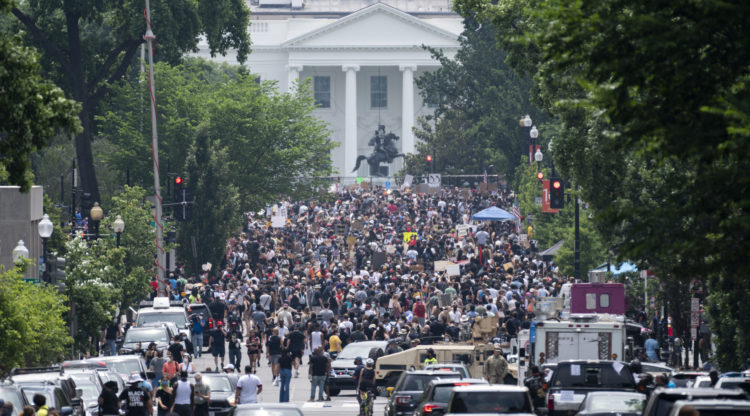It's not possible for the everyday reader to know who wrote that sentence. The lead writer who was pulling feeds from several reporters in the field? One of the field reporters who had scratched it in theirs notes? An editor who teased it out of grafs of information filed in different writing styles, then stitched them together and smoothed them into a single voice?
No matter. It's the kind of line in a fast-moving round-up story that pulls out of the cascade of vignettes for a moment, and provides a welcome pause. In this case, the pause is not just a matter of good pacing, but a simple line that tells the whole story. And the story contained in that sentence is not just the chronicle of a single news event or day, but of what is, as of this writing, more than two weeks of street demonstrations that show little sign of abating.
"They were tired, so tired and still they returned."
The sentence sat in the middle of a Washington Post piece published on Saturday, June 6 — 12 days after George Floyd died while being detained by Minneapolis police, and more than a week after people took to the streets around the world, demanding racial justice and an end to police brutality. In Washington D.C., when this round-up was filed, demonstrators were surrounding the White House in crowds that grew as the weekend went on.
Covid concerns. Tear gas and pepper spray and police batons. Erratic transportation. Rumors and false news reports.
The demonstrators must have been tired. So tired. And still ...
Round-up stories can often lack the kind of cohesion that captures the heart of an event. Reporters and photographers see moments within a narrow field, and file quick sketches, usually leaving it to a write-through editor or lead writer to build a narrative. Feeds come not just from reporters in the field, but from the din of social media. The challenges are intensified when the round-up tries to summarize widespread, chaotic, fast-changing news. The scene on one corner or quote from one source may stand out in the moment — only to be overrun by other scenes, other quotes, as the day goes on. Then add the challenge of filing updates in the 24/7 digital cycle, which is really no cycle at all but a constant. Gone is that natural lull in the print production process that allowed a few moments to identify the best lede into a multi-faceted event, or gave the writer a chance to pull the thread that arranged a pile of patches into a logical and pleasing quilt.
A note underscoring all of that: My SAVE file included a link to the story where I read this sentence. It is dated Saturday, June 6. When I opened that link a few days later, it brought up an updated round-up, published June 7. The sentence was gone. Normally, I would consider that a metaphor for the fleeting nature of news. But in this case, that now-missing sentence echoes through every day's news.
(PS: If I can reach one of the reporters who has the earlier file, I'll sub it here.)



